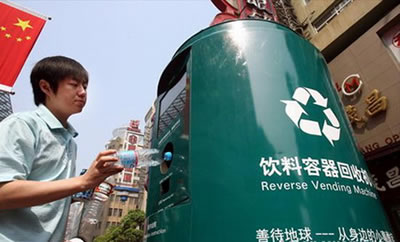The Ellen MacArthur Foundation, in partnership with UNCTAD, releases a new report on the opportunities for urban and industrial innovation in China.
New research has found that a transition to a circular economy in China’s cities could make goods and services more affordable for citizens, while at the same time reducing the impacts generally associated with middle-class lifestyles.
The findings were presented in a report by the Ellen MacArthur Foundation at the World Economic Forum’s Annual Meeting of the New Champions in Tianjin, China, on 20 September.
“China has long been a pioneer of circular economy policies and practices, and China’s cities are hubs of circular economy innovation,” Ellen MacArthur, the record-breaking British sailor who launched the Ellen MacArthur Foundation in 2010, said.
“This new report shows that transition to a circular economy presents China’s cities with significant opportunities to create new value, economic growth, and further drive that innovation, while becoming more liveable for citizens.”
The report was produced in partnership with UNCTAD, Arup, McKinsey & Company, and funded by the MAVA Foundation. Public institutions, academics and the private sector in China gave feedback.
Circular economy principles look beyond the current “take-make-dispose” extractive industrial model and are restorative and regenerative by design. The idea relies on system-wide innovation to redefine products and services to design out waste while minimizing negative impacts.
Collaborative approach
“A shift towards a circular economy in some of the world’s largest cities can be challenging, but it is a necessary evolution required to achieve the Sustainable Development Goals,” said Pamela Coke-Hamilton, the director of UNCTAD’s division on international trade and commodities.
“Restrictions adopted on trade of scrap materials and used textiles in Asia and East Africa highlight the importance of trade and commercial diplomacy to tackle problems in this area.”
The new report highlights the importance of collaboration among decision-makers and government, as well as public and private sectors engaged in value chains. Only then can the many benefits of a circular economy be realised at scale.
The analysis, which identifies opportunities across five focus areas (built environment, mobility, nutrition, textiles and electronics), shows that applying circular economy principles at scale could save businesses and households approximately $10.3 trillion by 2040 (16% of China’s projected GDP).
This would enable more of China’s urban dwellers to enjoy a middle-class lifestyle, while at the same time, see China’s cities reduce emissions of fine particulate matter by 50%, emissions of greenhouse gases by 23%, and traffic congestion by 47% by 2040.
Multiple examples
China’s cities are well placed to adopt a circular economy. China has been a frontrunner in this field for more than two decades. It continues to lead on the topic, as demonstrated by its recent signing of a memorandum of understanding with the European Union to align policies that support such a transition.
The country’s continuing urbanization, rapid development of digital technologies, and the boom in asset-sharing platforms present significant opportunities for further industrial innovation and circular urban development.
Pioneering cities and businesses in China are already beginning to capture these opportunities, as demonstrated by multiple examples.
The report follows similar cooperation between UNCTAD and the Ellen McArthur Foundation which in 2016 resulted in a report assessing the potential of circular economy approaches for critical economic sectors in India.

